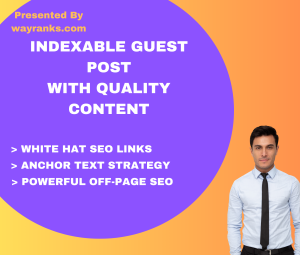Working with a Web Design Agency is a collaborative process that typically involves several key steps to ensure that your vision is brought to life in an effective and user-friendly manner. Here’s a step-by-step guide to help you understand the process from start to finish:
1. Initial Consultation & Discovery
- Goal: Understand your business, needs, and goals.
- What happens:
- The agency will ask you questions about your business, target audience, goals, brand identity, and any specific design preferences.
- You may also share examples of websites you like or dislike.
- The agency will discuss the scope of the project, timeline, budget, and any technical requirements.
- Outcome: The agency has a clear understanding of your needs and objectives, and they can determine if they are the right fit for the project.
2. Proposal and Contract
- Goal: Agree on the terms and finalize the project details.
- What happens:
- Based on the discovery phase, the agency will provide you with a proposal that includes project scope, deliverables, timeline, pricing, and payment schedule.
- Once you agree, a formal contract will be signed that outlines responsibilities and expectations.
- Outcome: Both parties have a clear understanding of the project’s framework, and work can officially begin.
3. Research & Planning
- Goal: Set a foundation for design and development.
- What happens:
- The agency conducts research on your competitors, industry trends, and your target audience to ensure the design aligns with market expectations.
- A sitemap or wireframe may be created to show the website’s structure and how users will navigate through the site.
- You may also discuss features, functionality (e.g., e-commerce, forms), and any integrations needed.
- Outcome: A solid plan and structure are in place before any design or development work begins.
4. Design Phase
- Goal: Visualize the website’s look and feel.
- What happens:
- The agency’s design team creates mockups or prototypes based on the wireframe and your branding guidelines (colors, fonts, logo).
- They may present initial design concepts for feedback, allowing you to make suggestions or request revisions.
- Outcome: A finalized design direction is agreed upon, with a visual representation of what the website will look like.
5. Development Phase
- Goal: Turn the design into a fully functional website.
- What happens:
- The development team takes the design and converts it into a working website, writing the code necessary for the site’s functionality.
- This phase includes front-end development (how the website looks) and back-end development (how it works).
- You may be involved in testing functionality such as forms, shopping carts, and other interactive elements.
- Outcome: A working prototype of the website that is fully functional and ready for testing.
6. Content Integration
- Goal: Add your content (text, images, videos, etc.) to the site.
- What happens:
- You provide the necessary content for the website, such as product descriptions, blog posts, images, and videos.
- If content creation is part of the agency’s offering, they may help create or edit your content.
- The agency integrates the content into the website, ensuring it fits with the design and layout.
- Outcome: A content-rich website that aligns with the visual design.
7. Testing & Quality Assurance
- Goal: Ensure the website works flawlessly across all devices and browsers.
- What happens:
- The agency thoroughly tests the website on various devices (desktop, tablet, mobile) and browsers (Chrome, Firefox, Safari, etc.) to ensure compatibility.
- They will also check the site’s speed, functionality, and usability, identifying any bugs or issues.
- You may be asked to review the site and provide feedback on any final tweaks.
- Outcome: The website is bug-free and ready for launch.
8. Launch
- Goal: Make the website live for public access.
- What happens:
- Once everything is polished, the agency will launch the website on your hosting platform.
- They may assist with domain setup, SEO configurations, and analytics tools (e.g., Google Analytics).
- You’ll review the live site and confirm that everything works as expected.
- Outcome: The website is live and accessible to the public.
9. Post-Launch Support & Maintenance
- Goal: Ensure the website runs smoothly and remains up-to-date.
- What happens:
- The agency may offer ongoing support to handle any issues that arise after the site goes live.
- Regular maintenance tasks, such as updates to plugins, security checks, and content updates, may be included.
- You might also discuss digital marketing strategies, like SEO or social media, to drive traffic to the website.
- Outcome: Your website remains secure, updated, and performs as expected over time.
10. Feedback and Iteration
- Goal: Improve the website based on user feedback and analytics.
- What happens:
- After launch, the agency may gather user feedback through surveys, analytics data, or direct input from customers.
- You can discuss improvements or new features to enhance the user experience.
- The agency will help implement any required updates or revisions.
- Outcome: Continuous improvement of the website to meet business goals.
